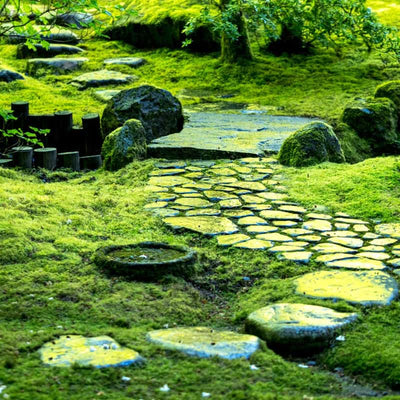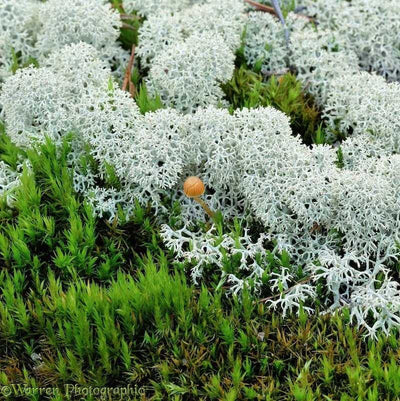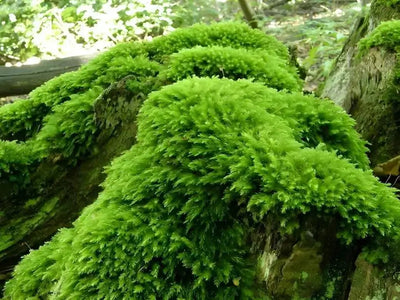Live moss is the right option if you want a fun way to spruce up your garden
It is easy to plant and care for and add an organic, natural look. Live moss can be used in many different ways: as ground cover, hanging baskets and planters, as part of a rock wall, or as other landscape features. You can use it to line a walkway or border your flower beds! The possibilities are endless.
Moss is also great for adding color to your outdoor space without using chemicals or fertilizers. Thus making it perfect for those who want an environmentally friendly solution. If you are new to gardening with live moss, here are some things to know before getting started: To grow live moss, you will need the following:
A pot or container: You can use a wide-mouthed jar, a small bucket, or a planter box. If you are using an aquarium, make sure it has holes in the bottom for drainage.
A sharp knife or scissors: Do not use scissors that are meant for fabric; they will not cut through moss well.
An eye dropper, syringe, or pipette: This is used to add water to your container without getting your hands wet (which could cause disease). After watering, you can also use it to remove excess water if there is too much in the container.
Watering can spray bottle or hose: If you choose not to use an eyedropper/syringe/pipette, use one of these methods when watering your mosses so that you do not accidentally get water on yourself while you are working.
Gloves (optional): If you are worried about getting sick from touching moss too much, wear gloves when handling it. Grow Your Live Moss with These 10 Easy Steps Whether you want to put it in your yard or home, it does not matter! We got you covered with some of our top tips for getting started gardening with live moss:
Step 1: Make Sure You Have the Right Kind of Moss for the Area Where You Want to Put It.
Not all mosses are suitable for every climate or environment. If you have a shady garden spot, try adding shade-loving mosses like Polytrichum commune. If you have a sunnier spot, try adding sun-loving moss like Climacium americanum.
Step 2: Check Your Light Requirements
Mosses need different amounts of light depending on where they are grown. Most mosses require at least some direct sunlight (3- 4 hours per day), or they will die off quickly and turn brown or yellowish.
Some species need total sun exposure (6-8 hours per day), while others prefer shade or partial shade. If you are unsure how much light a particular species needs, check with your nursery experts or your seller. This way, you can tell if it suits your environment and situation.
Step 3: Test Your Moisture Levels
Mosses grow best in moist environments but not necessarily wet ones. Suppose there is not enough moisture in the air because there is no rain or irrigation system nearby. In that case, it would help if you considered adding a humidifier to your basement or garage so it does not get too dry during winter when temperatures drop below freezing.
Step 4: Test Your Soil Ph
Before planting live moss, test the pH of your soil. If you find it too acidic or alkaline, you must adjust it before planting your moss. To do this, use a kit that includes a testing solution and pH indicator strips. You will also need a small container of water and some tweezers or other tool for mixing the solution with the soil sample.
Step 5: Create Planting Trays or Pots
You can plant live moss in any number of containers: plastic cups or baskets, glass jars, ceramic pots, or even recycled terra cotta flowerpots. Ensure the container has drainage holes so excess water does not damage your plants. You also want to choose a container that will allow enough room for each piece of moss to spread out freely without crowding its neighbors.
Step 6: Prepare Your Substrate
You will need a substrate that is loose, light, and airy; it can be a mixture of peat moss and perlite or just peat moss alone. The moss you get will also impact the soil you use; some varieties grow better in acidic soil, while others prefer alkaline conditions.
Step 7: Cover the Substrate with a Thin Layer of Soil
Cover the substrate with a thin layer of soil. The soil will help hold in moisture and provide nutrients for the moss to grow on top of it. This layer should be primarily about 1/4 inch (0.6cm) thick.
Step 8: Place Your Tray or Pot in an Appropriate Place for Growth
The ideal location for your moss garden will be a low-light area, such as a hallway or bathroom, that gets no direct sunlight. The less direct light it receives, the better. At first, you may want to place your tray or pot on top of something else, such as a cabinet or bookshelf, so the moss has more room to grow and spread out.
Step 9: Water Your New Moss Plants During This Process with Care
Keep the soil damp but not soaked so that you do not drown the plants or create soggy soil conditions that might lead to root rot and other problems. If possible, try misting moss plants with an atomizer spray bottle once a week while still in their pots or trays before placing them into their permanent homes. Thus helping them stay hydrated throughout their first few months of growth without worrying about over-watering them.
Step 10: Harvest Any Excess Spilled Moss to Transplant Later If Desired
If you have too much moss in one place, consider harvesting some of it before it dies out thoroughly and then transplanting it into another area that needs more coverage. Harvesting excess moss will also allow you to look at how much sunlight this particular area receives and decide if you need more or less coverage in the future.
Bottom Line Live moss is relatively easy to care for, low-maintenance, and safe. As long you follow these ten steps, you should be able to plant, tend and harvest an excellent crop of moss. Once you are up to speed, there are many ways to incorporate live moss into your home and daily life. Give it a shot this winter when traditional garden plants are dormant. It is a fun way to add greenery and natural beauty to your home, which makes it the perfect addition to any indoor garden collection.





